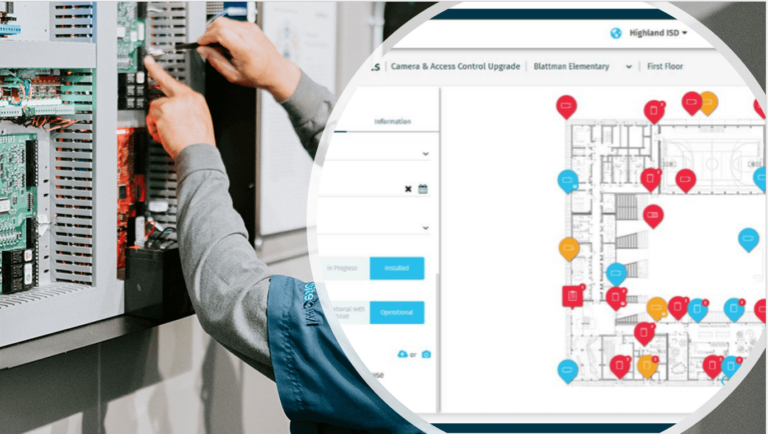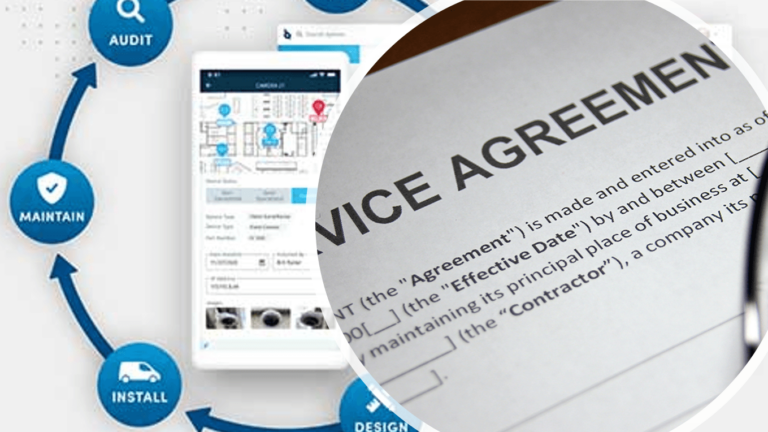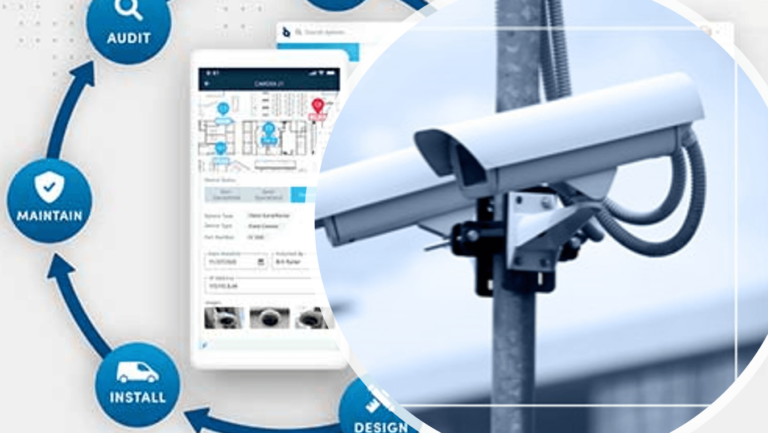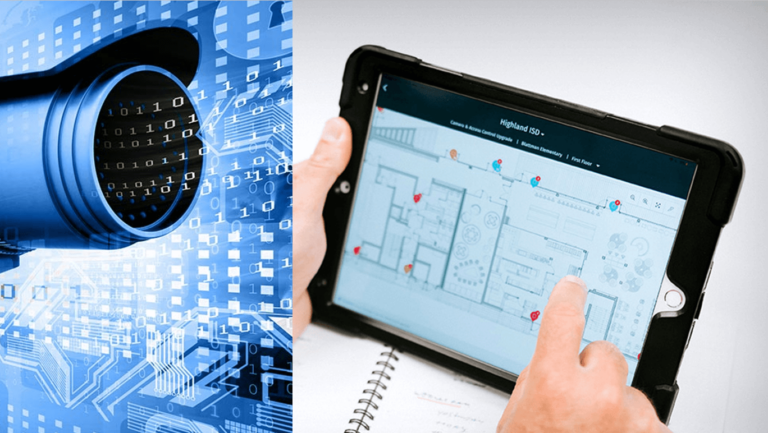Table of Contents
- Shift From a Project Mindset to an Account Mindset
- Get Every Account on an Engaging Service Plan
- Standardize Project & Service Delivery
- Elevate Your Service Offering
- Digitize Your Delivery
Recurring revenue contracts are more important than ever for integrators looking to maximize profitability and boost the bottom line.
One survey found that over 50% of companies switching to recurring revenue models did so to increase revenue and improve the customer experience. Many of these companies also see improvements in customer loyalty and satisfaction.
For physical security integrators, recurring revenue typically materializes from cloud-managed services. However, repair services and post-installation service plans are also viable options when implemented with adequate planning and foresight.
In this article, we’ll take a close look at five things you can do to secure recurring revenue opportunities for your company.
1. Shift From a Project Mindset to an Account Mindset
One of the biggest obstacles integrators experience when searching for recurring revenue opportunities is overcoming the outsized role that requests for proposals (RFPs) play in long-term profitability.
Don’t get us wrong: RFPs can be an important tool for acquiring jobs and bringing in new clients.
On the surface, the drive to chase new revenue makes sense. However, moving on from an existing client too quickly can easily equate to a missed opportunity if the customer had a good experience and still has outstanding opportunities.
Here are market trends impacting existing client relationships:
- Physical Security Technology: Rapid tech advancements demand integrators to offer up-to-date solutions like AI-based surveillance and biometric access control, enhancing security effectiveness.
- Physical Security Solutions: Clients seek integrated solutions covering video surveillance, access control, and emergency response, emphasizing comprehensive security approaches.
- Services Model: Shifting towards ongoing services, integrators monitor, maintain, and update systems, ensuring lasting value and strengthening loyalty.
- Systems Integrators: Evolving into strategic advisors, integrators must understand client needs, provide tailored solutions, and build trust for enduring partnerships.
Maximizing Revenue through Customer Relationships is key
Unfortunately, too many integrators make the mistake of cycling the team back into the bidding process rather than trying to uncover additional revenue opportunities.
Spending more time with existing customers and dedicating resources to deepening those relationships can help you transition one-off customers into long-term, high-value accounts. Done correctly, building this type of relationship can give you the first pick of jobs that the customer has to offer and may even lead to sole-source contract opportunities farther down the road.
Research shows that nearly 75% of US customers consider the experience a key factor in their purchasing decisions, and customers who have a great experience will pay more for it and stay loyal to the brand that provides it.
While changing to an account-based mindset might feel like a strain at first, you may quickly discover that going that extra mile frees up additional time and resources to spend less time bidding and more time helping your existing customers.
And from the perspective of customer engagement and long-term profitability, delivering that level of attention when nobody else in the market is doing so can lead to massive rewards.
2. Get Every Account on an Engaging Service Plan
In many ways, developing a recurring revenue business for integration starts before you win an RFP or begin any contracted work. Your sales team needs to lay the groundwork for what happens after the job finishes.
While it’s true that service contracts only begin after the project is complete, the ability of your technicians to supplement customer systems with valuable and timely expertise shouldn’t be underestimated or undervalued.
Integrators who wait to discuss maintenance contracts and highlight the benefits of that service run the risk of the customer interpreting a service solution as an add-on rather than a core value offering.
Because securing a long-term service contract with your customer is essential in the recurring revenue model, technicians need to bring the concept up early and often so that customers understand the need, and your solution, for long-term care.
Service Contracts vs. New Business
Integrators often prioritize new projects over service contracts for higher immediate profits. Yet, embracing service contracts in the security industry, centered on physical security systems and new technologies, offers ongoing revenue and client rapport. In a complex security landscape, service contracts en
sure continual value, supplementing new ventures and fostering business resilience.
On the surface, that seems like a no-brainer. A single security project can be more profitable than a single service contract. This makes sense when considering the time, energy, and effort involved in working with customers, designing the system, and implementing the approved solution.
But is it true over the long term?
To truly account for the cost of a project, you’d have to look at all the time and manpower it took actually to find, bid, and win the project, in addition to the time, labor, and materials it takes to complete it.
Plus, for every project you win, you’ll have other projects you lose. While the time spent developing and submitting those proposals isn’t tracked within any one project, it can account for tens of thousands in labor costs without monetary return.
On the other hand, service contracts — once initiated — require minimal effort to maintain. Your service team can handle multiple contracts at a time, and you can optimize service output with powerful security information management tools to make the process even smoother.
That level of flexibility is why subscription-based services have become commonplace in other industries. When software giant Adobe switched to cloud-based subscription services back in the early 2010s, they netted a 22% ($1.31b) profit increase year over year.
Service-based revenue may offer lower profit margins in the short term. However, over time, it reflects a more stable growth cycle, gives integration teams room to do better work, and creates an opportunity for continued growth after most of your resources have moved on to a new project.
3. Standardize Project & Service Delivery
Research has already established that standardization boosts productivity, output, and quality. This is true across all business models, from manufacturing to retail sales and service.
Integrators often struggle when standardizing how information is passed through each project delivery stage clearly and consistently.
For instance, each salesperson may capture customer requirements differently, leading to major variations that the team has on hand when trying to design and implement projects. When missing or incomplete information passes from sales to engineering, it forces project managers and technicians to take an inconsistent approach to projects.
These variations in communication create confusion and delays in processes within your organization. Eventually, that trickles down to delays in project delivery, late deadlines, and dissatisfied customers.
The only solution to this problem is standardization. When executed correctly, standardized processes will:
- Decrease guesswork
- Simplify common processes
- Keep everyone on the same page
- Streamline training and onboarding
- Improve project delivery and quality
Most importantly, creating solid processes eliminates the proliferation of tribal knowledge, which can seriously hamper the team’s ability to execute projects consistently from one installation to the next.
But standardization doesn’t mean you must create rules and procedures for every possible situation or scenario. When adopting new software or offering new lines of service, it may make the most sense to let some systems grow organically and then prune that knowledge into a streamlined process.
Executing in this way will allow your team to develop systems that feel right for the organization rather than forcing team members into unfamiliar procedures that feel foreign and atypical.
Lastly, it’s important to consider standardization through every aspect of the business, including service. Systematized service and response can reduce the number of truck rolls by ensuring that the service team has all the required information before issuing support.
When things are consistent, regular customers will also learn how your department operates, what information the team needs to render effective service, and what happens after all relevant details have been submitted.
4. Elevate Your Service Offering
Customers entering into a service contract with your team are choosing (with their wallets) to extend their relationship with your organization.
However, it’s important to note that basic maintenance and repair services may not be enough to keep post-sale relationships afloat over a long period. If your customers can’t justify the spending, they may discontinue the service contract.
This often happens when companies review their expenses and find that the service contract they’ve purchased costs more than it would to repair or replace equipment when it malfunctions simply.
Most integrators present maintenance contracts like a security blanket by positioning themselves as experts on call when something goes wrong. But if equipment rarely fails and a system is fairly new, what justification does a company have to pay for contracted maintenance over an extended period?
This is why it’s critical to elevate your service offering to something that goes beyond basic maintenance and on-call support. For example, savvy integrators might also offer any of the following services:
- Preventative maintenance
- Hands-on training with technicians
- Training courses for on-site staff
- Priority and after-hours support
- Quarterly reports and reviews
- Conditional upgrade or replacement policy
- Regular calls or check-ins
- Planning and consultation
- In-stock guarantee for essential items
- Exclusive webinars, e-books, and resources
By elevating your service offering, you can deliver the white-gloved treatment that makes your company the de facto choice for future projects. Use that service as leverage to deepen and solidify customer relationships.
Simplifying Service Contracts
No matter how complex your service contracts become, your customers must understand what you’re trying to sell them, why it matters, and — most importantly — what they’re actually buying when they sign on the dotted line.
The easiest way to do this is to create packages for customers to help them streamline their selection process. Offer different types of service at different levels and use that distinction to improve perceived value.
You might also offer specialized packages based on industry type or perceived customer need. For example, a school may require more maintenance before reopening after the summer break. You can create a package to employ or train school staff members with knowledge to meet this unique demand.
However you choose to do it, be sure to include items that encourage loyalty and deeper relationship opportunities (like callbacks and reporting) in every tier so that your team has the opportunity to reach out and touch base with the people who matter.
5. Digitize Your Delivery
One of the key components of a service contract is the ability of your team to respond with precision and accuracy whenever problems arise with a customer system.
While this can be done through traditional pen-and-paper methods, these analog processes can cause inaccuracies that degrade data and impede the ability to deliver fast service.
Even the smallest security system consists of dozens of pieces of data, including serial numbers, IP addresses, warranty information, and more for every device in the system. That information adds up quickly, causing data management headaches for integrators and customers alike!
That’s why digitizing your delivery process is so important.
This goes beyond simple digital tools like spreadsheets and rudimentary project management platforms. Integrators will benefit most from using dedicated cloud-based security management tools to design floor plans and catalog system information while the project is being designed and built.
When project delivery is digitized from the earliest stage, all the information is uploaded to the cloud and updated as things progress. All the stakeholders and technicians associated with a project can access this data anytime and understand what is happening.
Because all information is loaded onto a shared, cloud-based platform, accessibility becomes easier. There is no chance of information degradation as projects move through your pipeline because changes are visible to everyone. Painful handoff meetings aren’t required, all notes and information pass seamlessly from one team to the next, and all essential parties can access those critical details.
And it doesn’t stop there. Better visibility of the progress of a project can also provide peace of mind for the customer and increase confidence in the integrator’s approach to the project. A cloud-based life cycle management suite makes it easier for customers to get involved, provide instant feedback, raise tickets, and resolve outstanding issues through all stages of design, installation, and post-sale maintenance.
Bringing Recurring Revenue Into Focus
Recurring revenue strategies are the key to long-term, sustainable growth. Many top integration companies already benefit from implementing effective service contracts and maintenance strategies with customers.
The best part: these strategies aren’t designed to replace or inhibit your ability to acquire new customers through your preferred medium (RFP, cold calling, etc.).
Instead, service contracts and maintenance agreements can provide a way to generate stable monthly income by dispersing an in-house resource — your service team — over a wide number of customers and contracts with no potential downside.
It wouldn’t make sense to have a dedicated service department for a single service contract. However, that department becomes far more profitable when the same resources required to run a single department are spread over two dozen contracts that each require similar levels of support and maintenance.
You can achieve this by standardizing and digitizing your processes through cloud-based security lifecycle management platforms. With precise data, more accessibility, and more accessible communication channels, you can dramatically improve the customer experience.
If you’re looking to maximize revenue through recurring services and want to jumpstart your progress, SiteOwl can help. Contact our team to learn more about everything our platform offers.

Su Subburaj
Su is SiteOwl's CMO and leads all marketing and communications. Su has extensive strategy and management consulting experience and previously consulted for 3Sixty Integrated where she gained an in-depth understanding of digital transformation challenges in the physical security industry. When not working on strategies to expand SiteOwl's footprint, Su enjoys bad karaoke, weightlifting and traveling.









